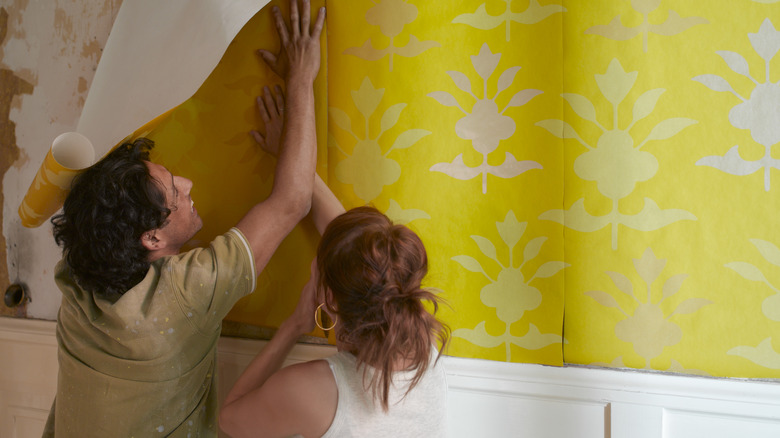The Clever Crayon Hack That Makes Wallpaper Seams Simply Disappear
We may receive a commission on purchases made from links.
Like a good rug, wallpaper can really tie a room together, but choosing the right wallpaper for your space can be tricky. Once you have chosen a color, pattern, and finish, you still have to calculate how much wallpaper you'll need, order it, and begin the installation process. A hiccup that no one expects is when the seams of the wallpaper show because the backside has not been printed. Luckily, others have not only been through this dilemma, but they have discovered a useful hack: By coloring the edge of the paper, you can make those pesky seams go away.
And you don't have to be Basquiat or Bob Ross for this coloring hack to work. All you need is a roll of wallpaper and a crayon that matches the color of the background. Using a wallpaper called Snake Charmer from Milton & King, Erin Desabelle (the.dessy.dwelling on Instagram) demonstrates how easy it is to color the edges while the paper is still in its tube.
Does this actually work? Yes, if you choose the right tools for the job
This hack depends on the type of wallpaper and crayons you use. Wallpapers are often made of paper, fabric, non-woven fabric, or vinyl. Coloring the edges of vinyl wallpaper is less likely to work because the wax in crayons won't stick to the plastic, especially if you're attempting to clean walls with a liquid solution. If you've ever tried to get wax crayon marks off of walls or clothing, you know that it will take more than a little water. This will work to your advantage in this hack if the wallpaper you're using is made of paper or fabric. There are also pastel dye sticks that are made specifically for fabric and are permanent once heat-set. Avoid using any crayons with the word "washable" on the package.
If you've already removed the wallpaper from the package or if it didn't come in a tube, another helpful tip directly from the Milton & King YouTube channel is to rotate the crayon while rubbing it along the edge. Rubbing the same spot will create grooves and could potentially mark the front of the paper, obstructing the pattern and making your walls look a whole lot worse.
